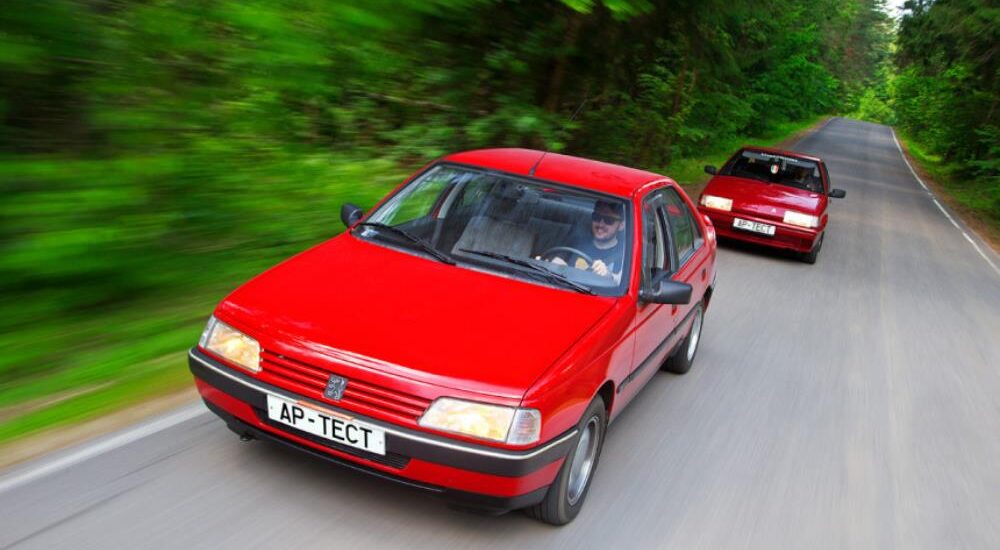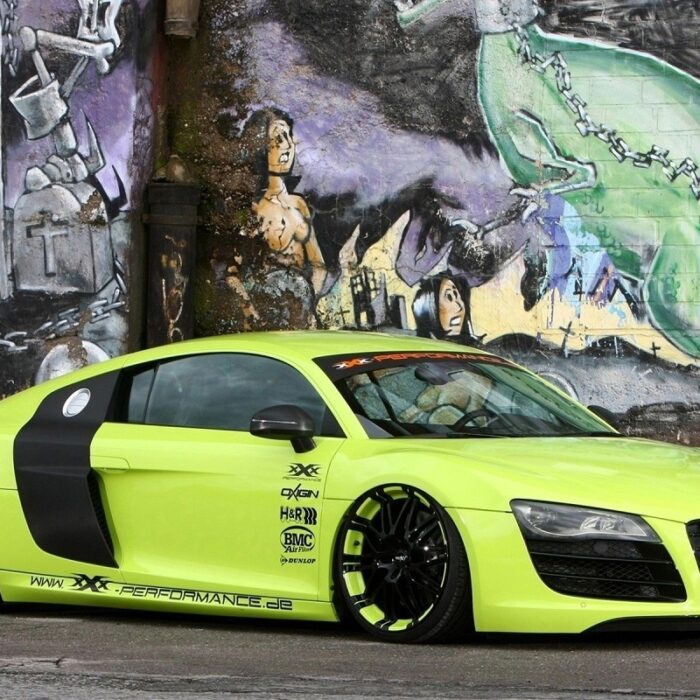Embarking on a nostalgic journey through the automotive wonders of the late ’80s, I found myself behind the wheel of two iconic French classics: the Citroen BX and its platform sibling, the Peugeot 405. Back then, auto critics playfully dubbed them “автомобіль з відра з запчастинами,” translating to a car born from a parts bin. Little did they know these cars would evolve into bestsellers, becoming true masterpieces of automotive culture.
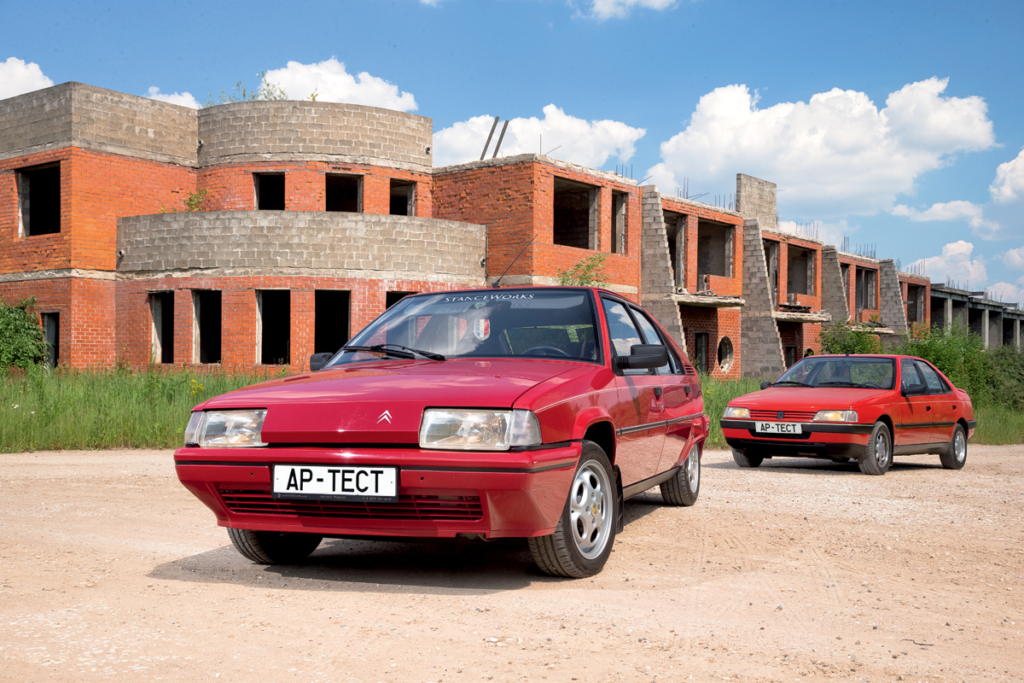
For more than half a century, all cars in France were equipped with yellow headlights. Legend has it that this rule was born on the eve of World War II to distinguish enemy cars from our own. But the law was passed back in 1936, and there was still a compelling scientific rationale behind it: yellow light is less blinding, does not create glare, and copes better with fog. In 1993, unified European requirements appeared – and FFBA00 color headlights became history.
As I explored these vintage gems, a puzzle unfolded before me. Despite emerging from the same “parts bin,” these cars displayed an unexpected diversity. From exterior features to interior nuances, Citroen and Peugeot showcased distinctive characters.
In the tumultuous ’70s, Citroen faced bankruptcy, leading to Peugeot acquiring a significant stake, forming the PSA Peugeot Citroen group. Amidst financial challenges, a collaborative effort birthed the BX in 1982, followed by the Peugeot 405 in 1987. The myth of French carmakers being stingy was debunked as these marques ventured into an ambitious cost-saving project.
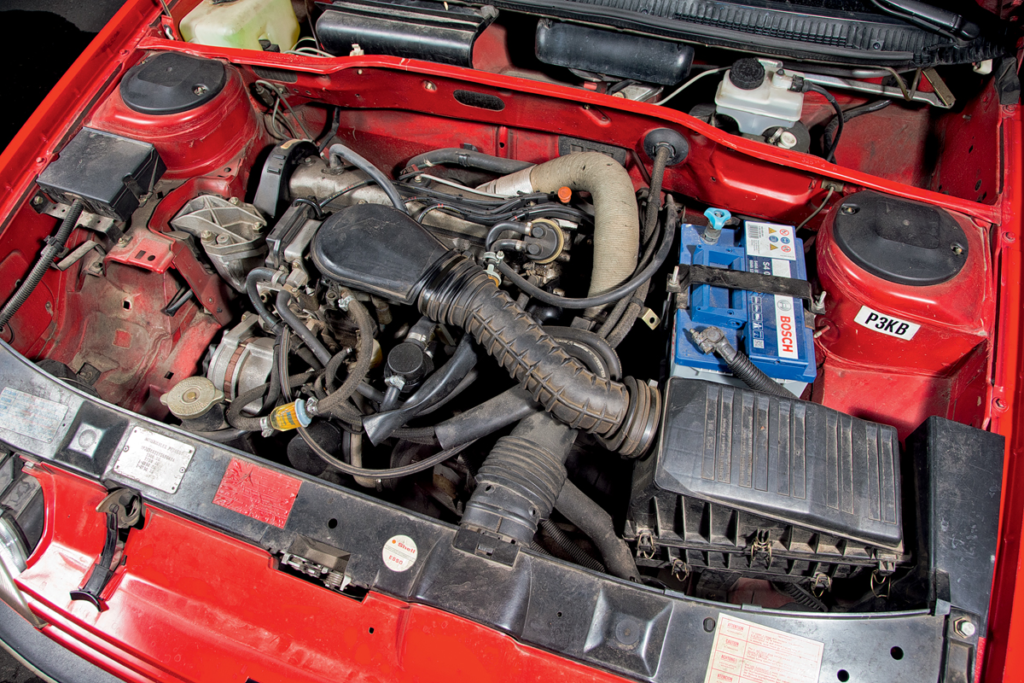
The eight-valve XU51C on Citroen and the XU52C on Peugeot are fundamentally different only in carburetors: the BX with a single-chamber can count on only 80 hp, and the “four hundred and fifth” with a two-chamber is 12 hp more powerful.
Contrary to expectations, the visual differences were striking. Crafted by Bertone and Pininfarina, Citroen and Peugeot bore unique design signatures. Panel gaps, windshield curvature, and even the wipers revealed their individuality. Yet, beneath these visual disparities, the engine compartment was the only visible sign of shared lineage.
The heart of both, the XU5 engine, hinted at unity while embracing diversity. The Citroen BX 15 TGE and Peugeot 1.6 GL versions shared the same 1580 cc displacement. However, the distinct carburetor choices reflected subtle variations in power—92 hp for Peugeot and 80 hp for Citroen.



The Peugeot XU series engine debuted on Citroens with the BX model. The bulbs on the supports of the struts are the spheres of the front suspension, and the main hydroaccumulator is installed behind the right headlight.
Beneath the surface, differences continued. Citroen introduced its hydropneumatic suspension with a unique twist—struts instead of the traditional double-wishbone. Meanwhile, Peugeot relied on conventional McPherson spring struts. The brake systems also diverged; Peugeot featured a horizontal vacuum brake booster, while Citroen integrated it into the suspension’s hydraulic system, showcasing the French penchant for innovative engineering.
As I immersed myself in the cabin experience, the dissimilarities persisted. Peugeot’s cockpit exuded a focused, low-seated posture, while Citroen provided a relaxed, reclined feel, akin to an airplane seat. Yet, a subtle hint of Lada nostalgia lingered in both interiors, as the grey matte plastic and console design seemed to have left a mark on various automotive cultures.
In essence, these French classics defied the cliché of parts-bin engineering, revealing a tale of collaboration that birthed two distinct personalities. So, as you embark on your own automotive adventure, consider the Citroen BX and Peugeot 405 as time-traveling companions, each with its unique story to tell.

Now, let’s journey back to the late ’80s with the Peugeot 405, a timeless melody that continues to enchant. Our friends at the intriguing car rental service, autobnb.ru, uncovered a rare gem—a 1991 “four hundred and fifth” in Russia, almost untouched by time. Ви можете навіть зробити magic firsthand with 10% discount за допомогою promo code “Авторевю” за 50 автомобілів в їх колекції.
This automotive masterpiece, with only 67,000 kilometers on the odometer and a single owner, is more than a time capsule; it’s an automotive “Mona Lisa.” What makes it so enchanting?


The driver’s mood and style are included in the basic equipment here. Unlike power steering, air conditioning, and ABS. But this is the first Peugeot with tilt steering adjustment.
As you turn the key, the starter whispers to life, and with a gentle tap on the gas, the engine wakes up. Shifting into the first gear is a breeze, short and precise, though you might need to find the sweet spot in the clutch’s travel due to a bit of bottom-end torque hesitation.
Navigating the parking lot presents a few quirks—the accelerator is firm, the steering is weighty with a 4.2-turn span, and warm air from the fan adds a unique touch. However, once the Peugeot hits the open road, the dynamics transform. Effortlessly gliding through traffic, this small and nimble car responds to a gentle tug on the steering wheel, providing ample torque in the mid-rev range. Exceptional visibility and responsive brake pedals enhance the driving experience.

The tachometer is marked up to 12,000! They used to know how to make them. Although wait… In the simplest combination of instruments, ordinary clocks are in the main place next to the speedometer. But there is a full-fledged temperature gauge, which is indispensable for old cars.
The Peugeot 405 feels like a land glider. Accelerating requires a collective effort from both driver and car, and shifting points are chosen by ear and feel due to the absence of a tachometer. The engine’s peak torque around three thousand RPM is accompanied by a distinct jerk and acceleration boost. Beyond that, the engine hums energetically but gradually eases off. Shifting slightly earlier at around 6000 RPM feels just right.
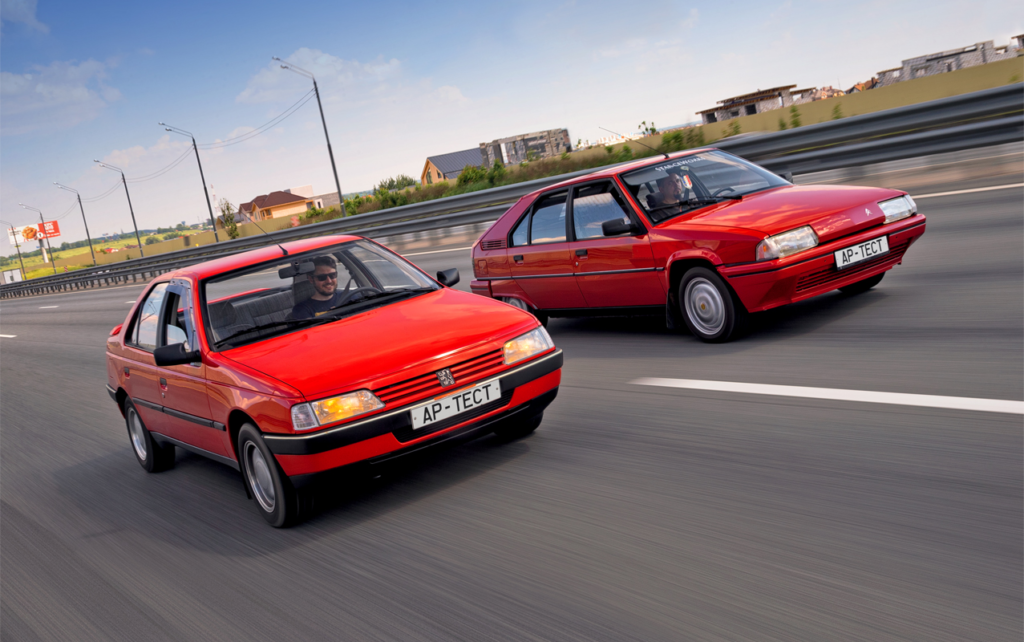
In a mere 13 seconds, you conquer the first “hundred.” Yet, once you reach that speed, the Peugeot gracefully manages and stabilizes it. Overrun and straight-line stability are commendable, making the car feel more secure as the speedometer climbs. At lower speeds, a slight dead zone in the steering disappears with acceleration, replaced by precise handling. Noteworthy is the car’s impressive top speed of 175 km/h—an exhilarating experience for both driver and vehicle.
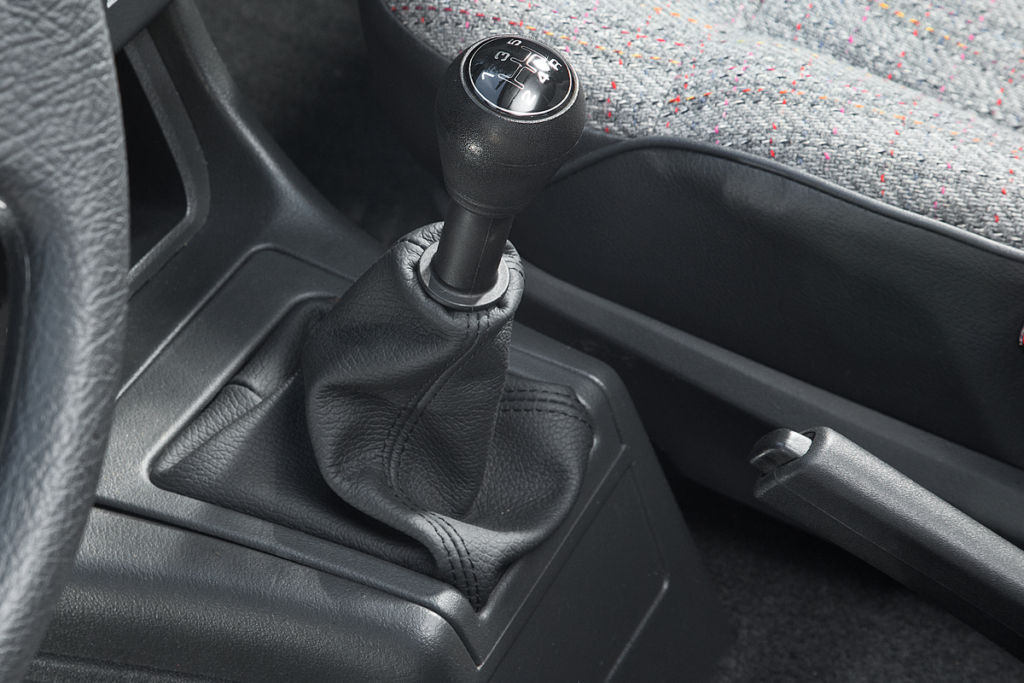
The five-speed BE3 transmission with reverse gear opposite to the fifth appeared on Peugeot in the late 80s. Prior to this, the “reverse” was engaged like on Samaras – to the left of the first.
Peugeot 405 loves a dance of intricate maneuvers on the serpentine test track, defying the concept of understeer. Its sleek front effortlessly leans into bends, offering the driver impeccable feedback. When you lift off the gas, the rear wheels respond with a textbook-perfect gentle slide, elegantly guiding the car into the turn without spiraling into a sharp drift.
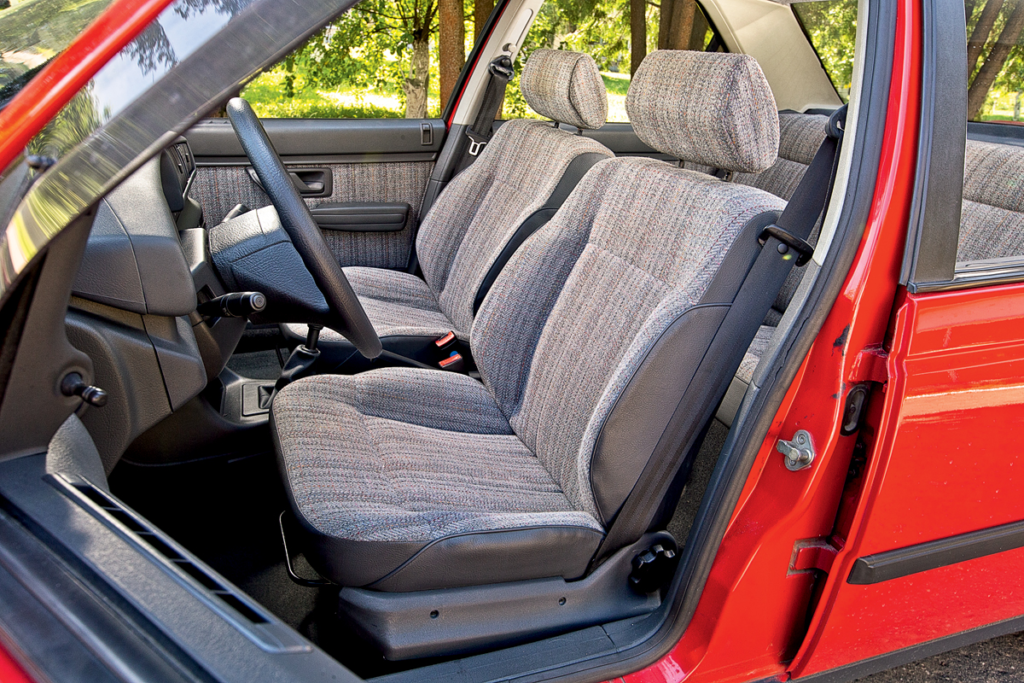
The soft and cozy-looking chair delights with unexpectedly firm side support rollers.
Yet, there are a couple of nuances. Firstly, there’s a bit of body roll, trailing slightly behind the steering response. The Peugeot tilts before adjusting its trajectory. Secondly, the non-power-assisted steering is weighty. While appreciating its natural transparency, you’ll find yourself leaning into the steering wheel, lifting off the seat. Add the impact of uneven asphalt, and the modest compliance of the safety-oriented wheel, and you realize that bemoaning such simplicity and honesty is unnecessary.
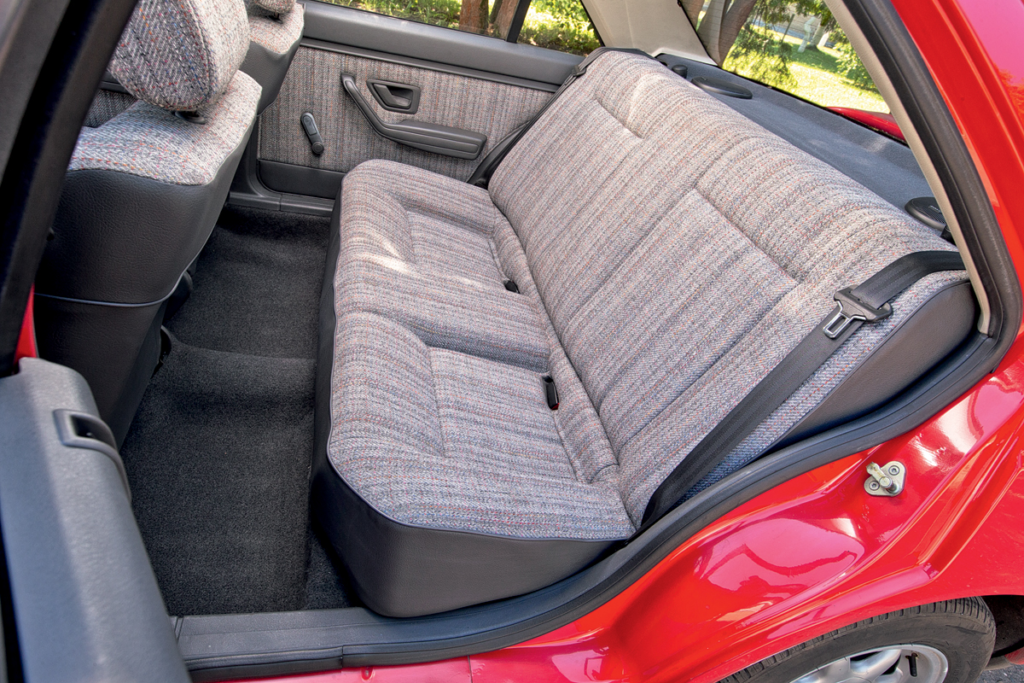
The rear sofa is soft and relief, but there are no seat belts for the middle passenger here.
However, the blend of maneuverability and comfort, a rare combination, is a vanishing art. The Peugeot 405 suspension gracefully navigates all imperfections on the road, from potholes and bumps to speed bumps, tram tracks, and cobblestones. It maintains exceptional dignity on country roads’ long waves, following the profile with minimal sway. Vibration only becomes noticeable when small sharp irregularities meet the wheels, reminiscent of a gravel road grader. Overall, it offers an almost exemplary suspension performance for a mass-produced car.
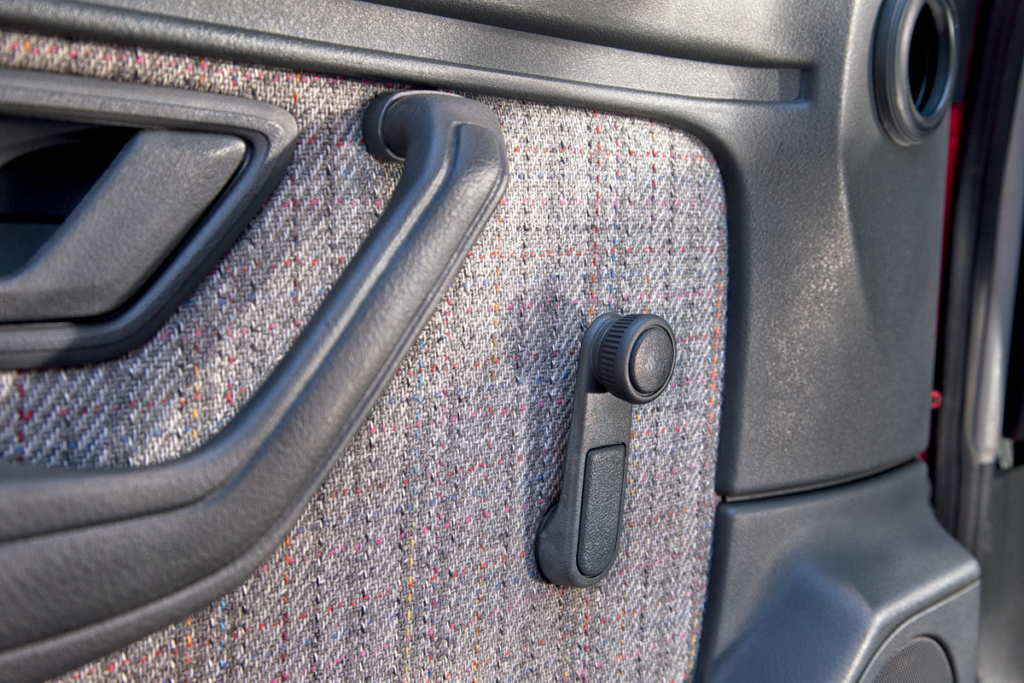
With such a stylish interior upholstery, even “oars” look elegant.
In the mid-’80s, long before the Peugeot 405 graced the roads, similar accolades were showered upon the BX. Initially met with reserved reactions, this standardized “Frenchman” quickly transformed into a beloved figure. The lightweight yet swift car, even with modest engines, came at an affordable price. It boasted a suspension akin to the legendary large Citroëns and a spacious trunk with a foldable rear seat. Even before the “four hundred and fifth” premiered, the BX had sporty versions like Sport, GT, and GTI. England embraced it, doubling Citroën’s market share, and the BX’s success extended across France and continental Europe.
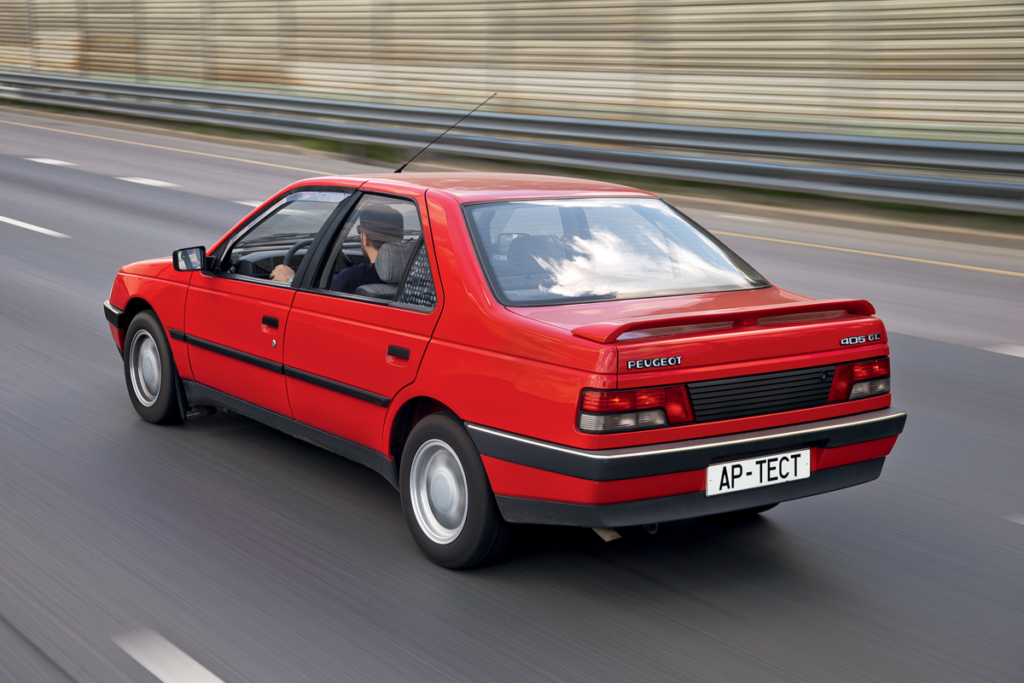
White sections of the rear lights and a plastic insert between them are signs of pre-facelift sedans. The spoiler was not factory equipment for carburetor versions of the GL 1.6. Without it, the aerodynamic drag coefficient of the Peugeot 405 was 0.31, but on some versions, it dropped to 0.29.
In England, the BX was promoted with the slogan “Loves driving, hates garages,” emphasizing that this French car was meant to be on the road more than in the workshop. Unfortunately, times have reversed, and finding a functional BX is now rarer than an unused Peugeot, especially in Russia.
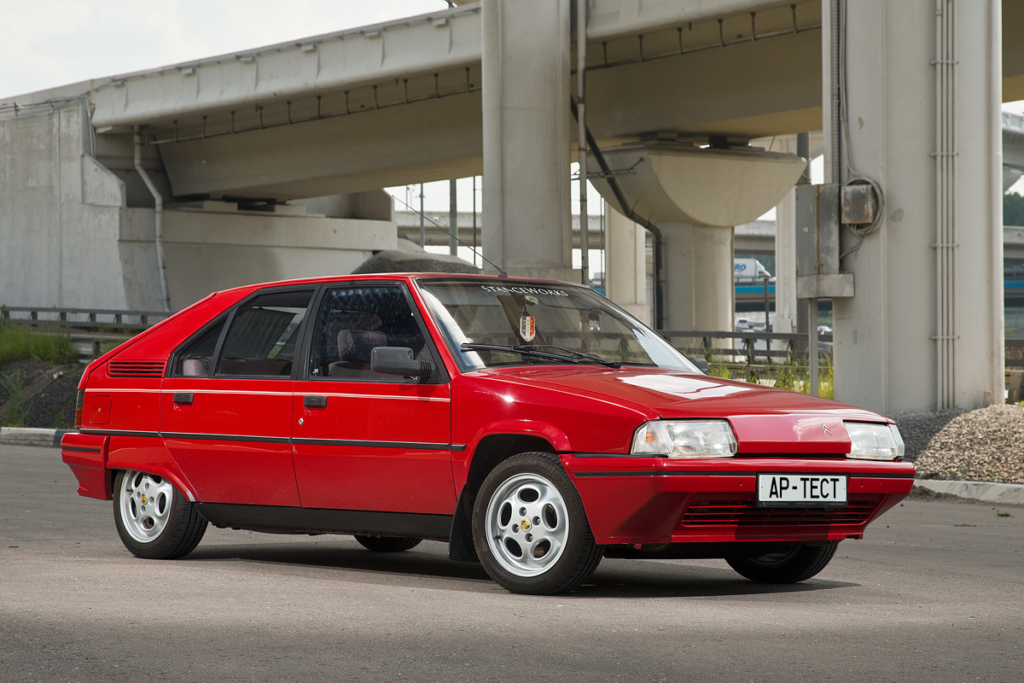
Strange emblems on the wheels? As it turned out, original discs on the BX are such a rarity that it was much easier to find wheels suitable in size from a Porsche 924 with a four-bolt hub.
Our red Citroën, after covering at least 120,000 kilometers over 32 years, found a home with enthusiast Konstantin, dedicated to preserving old French cars. Yet, this noble pursuit comes with challenges—hunting for rare parts to maintain the car’s original appearance, all while enduring inquiries about the hydropneumatic suspension’s condition.
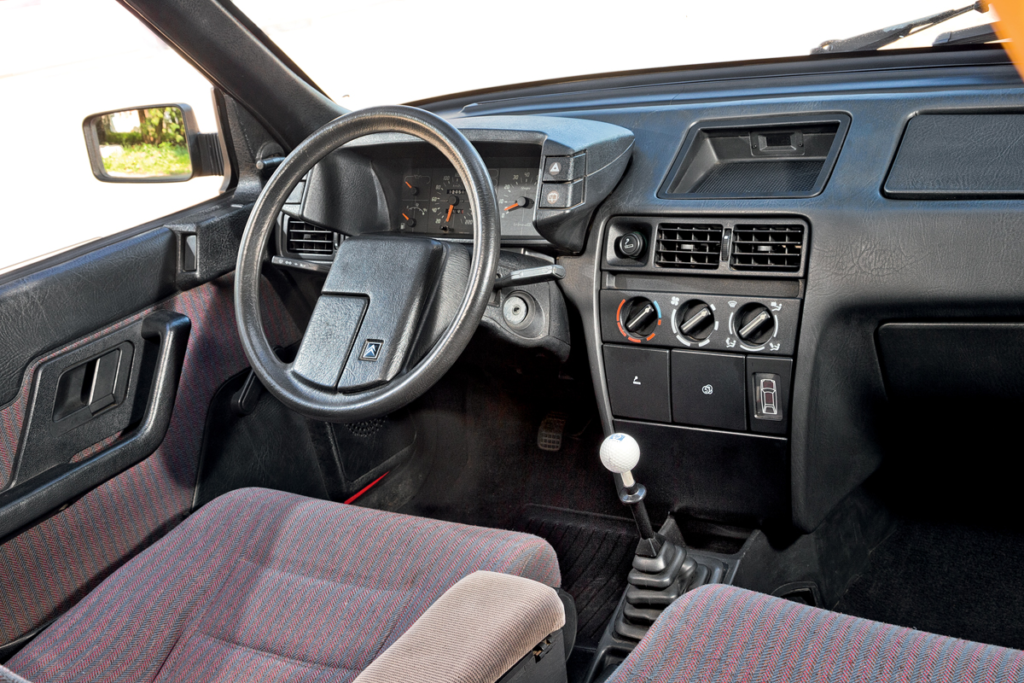
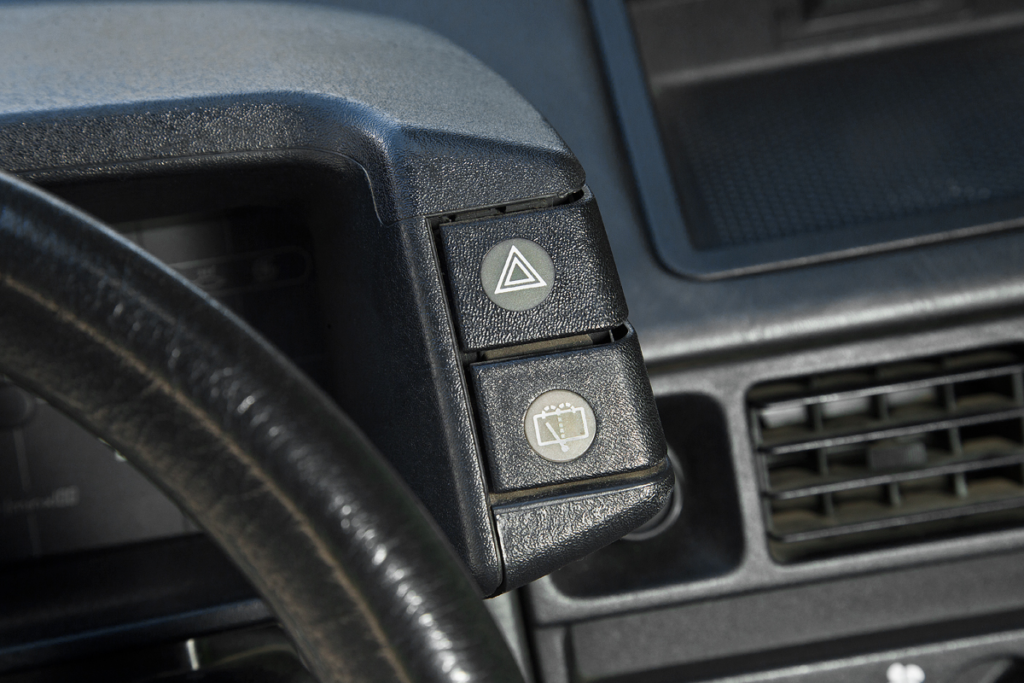
The restyled Citroen salon is almost similar to the interiors of “normal” cars. It only reminds of the avant-garde 80s with a steering wheel with a single spoke.
Now, our BX in the parking lot has lowered its rear wheels. “Is it supposed to be like this?” Unfortunately, no. The system, designed to maintain pressure, gradually lowers the car, returning fluid to the central reservoir. However, over the years, wear takes its toll. After starting the engine, you’ll need to wait a few seconds for the pump to restore pressure in the rear hydro-cylinders, and the BX lifts its tail.
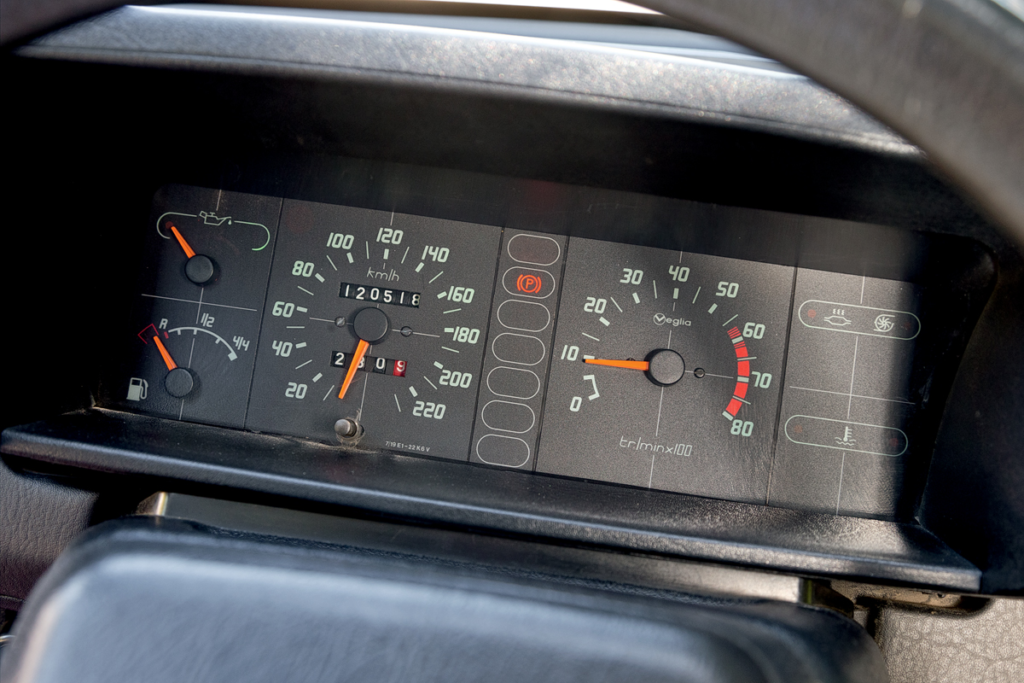
Such scales appeared on Citroen only by 1987. The basic version has a tachometer, but there is no coolant temperature gauge. Instead, there are only two indicator lights – yellow and red, which warn of overheating.
Citroën manages with minimal equipment, having once featured power steering. The shorter rack (3.6 turns from lock to lock) makes the steering heavy, though the accelerator is lighter and sharper. Despite appearances, the BX’s eighty-horsepower engine demands careful speed planning. The tachometer is present, but acceleration to 100 km/h takes 22 seconds, with a maximum speed of just 143 km/h, utilizing almost the entire dynamometer road.
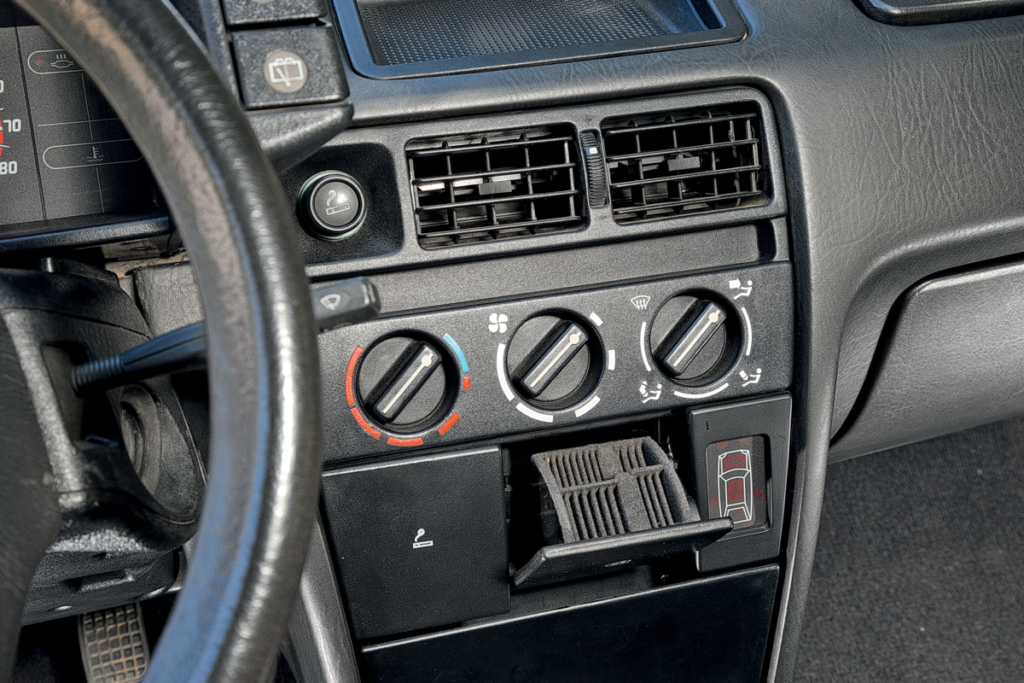
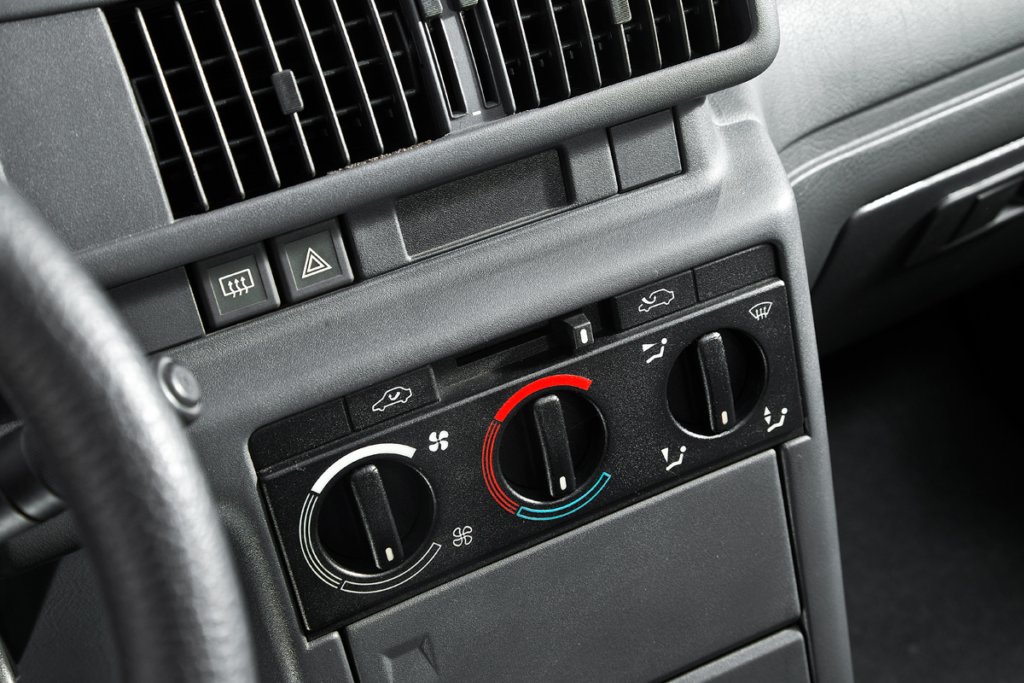
Ventilation control knobs may look similar but are installed in a different order. In this configuration on Citroen (first slide), there is no recirculation mode, but there is a coin holder.
Unlike the “four hundred and fifth,” the BX doesn’t revel in fast driving. It tends to wander along the trajectory, demanding corrections. Surprisingly, the steering feedback is calmer than the Peugeot with a “long” rack. While steering becomes heavier in turns, the feedback is more blurred, impacts are pronounced, and the driver’s posture isn’t ideal for active steering. Rolls are more pronounced, delivering a family-friendly rather than thrilling experience.
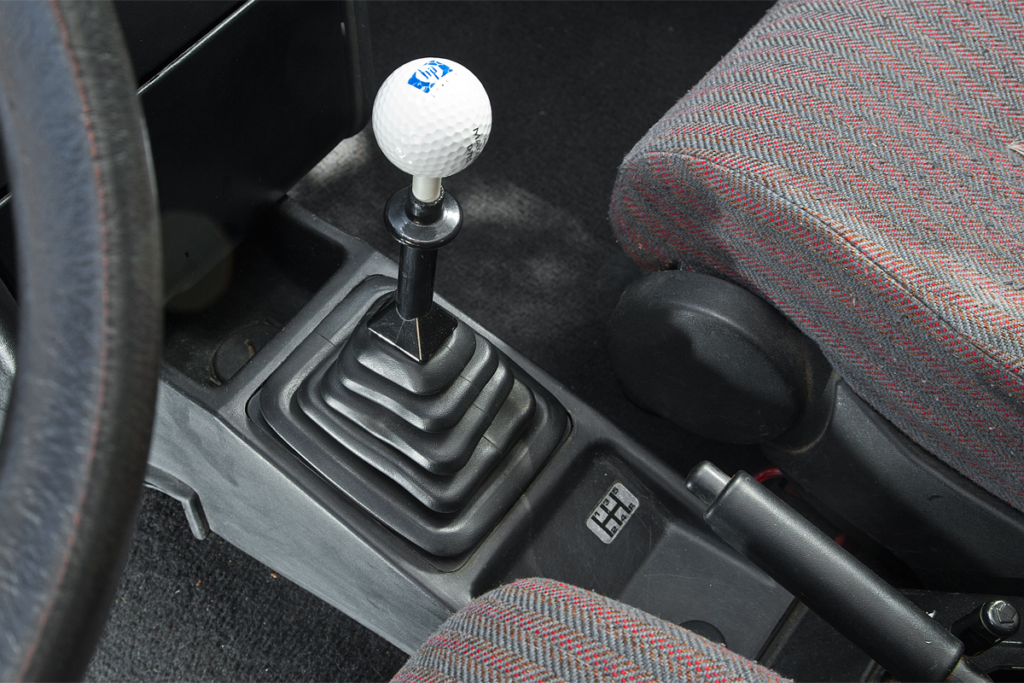
The lever is decorated to the taste of the owner, although the same BE3 transmission is installed on Citroen as on Peugeot. Except that the clarity noticeably decreased due to age.
The brakes, sans ABS like the Peugeot, offer stable deceleration on mixed surfaces. However, adjusting to the peculiar pedal feel—minimal travel, maximum sensitivity, and requiring effort, akin to pressing a rubber ball into the floor—takes some getting used to.
Comfort resides in the soft, broad seat and a gentle sway on the smooth asphalt waves. When good asphalt turns to bad, the body begins to encounter a barrage of impacts from small and medium irregularities.
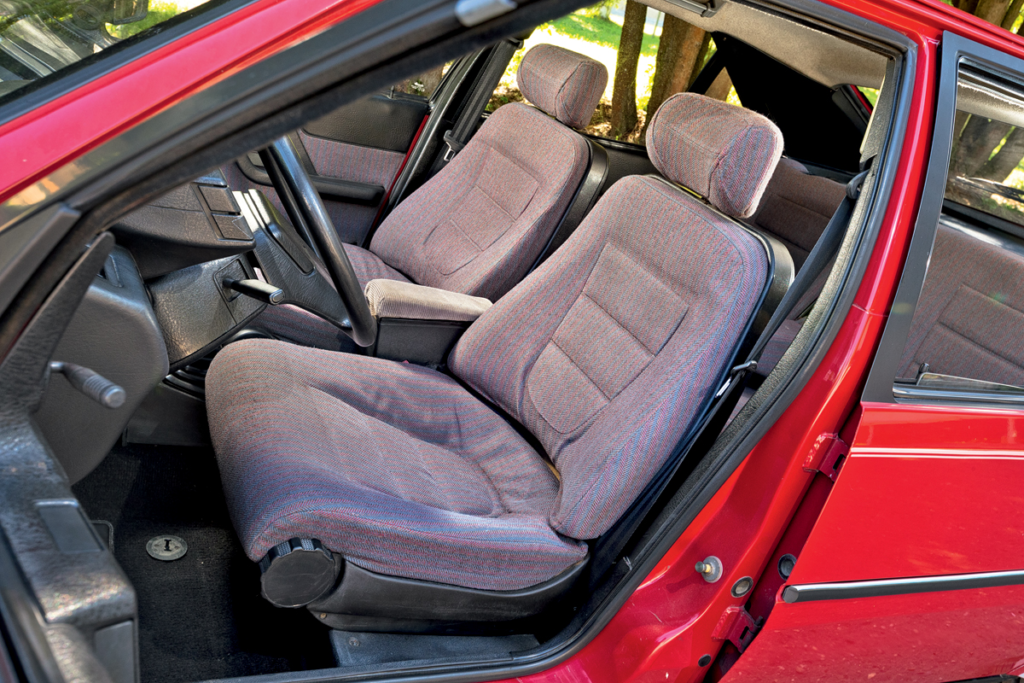
The chair seems relief, although there is almost no side support. Adjustment is handled by two drums at the corners of the cushion.
The BX driver lacks the luxury of adjusting suspension stiffness; it remains a constant feature. The lever nestled between the seats serves only to set the ground clearance height. It’s advisable to stick to the two middle positions for regular driving, reserving the extreme lowest and highest settings strictly for maintenance duties (a makeshift jack) or off-road adventures.
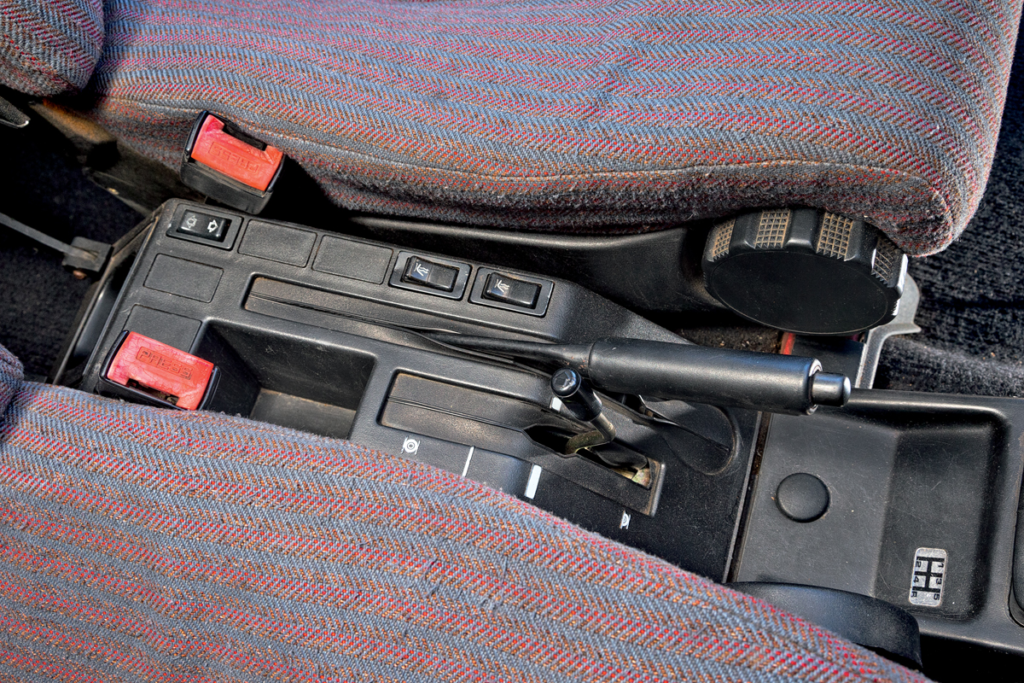
The lever near the handbrake is responsible for the suspension level.
Ultimately, the enchanting hydraulic ballet of the BX reveals itself fleetingly, precisely when the rear wheels gracefully negotiate a speed bump. The suspension “glides” over varying heights with almost imperceptible finesse. However, for the front wheels, the same journey transforms into a pronounced impact.
Is this the intended experience?
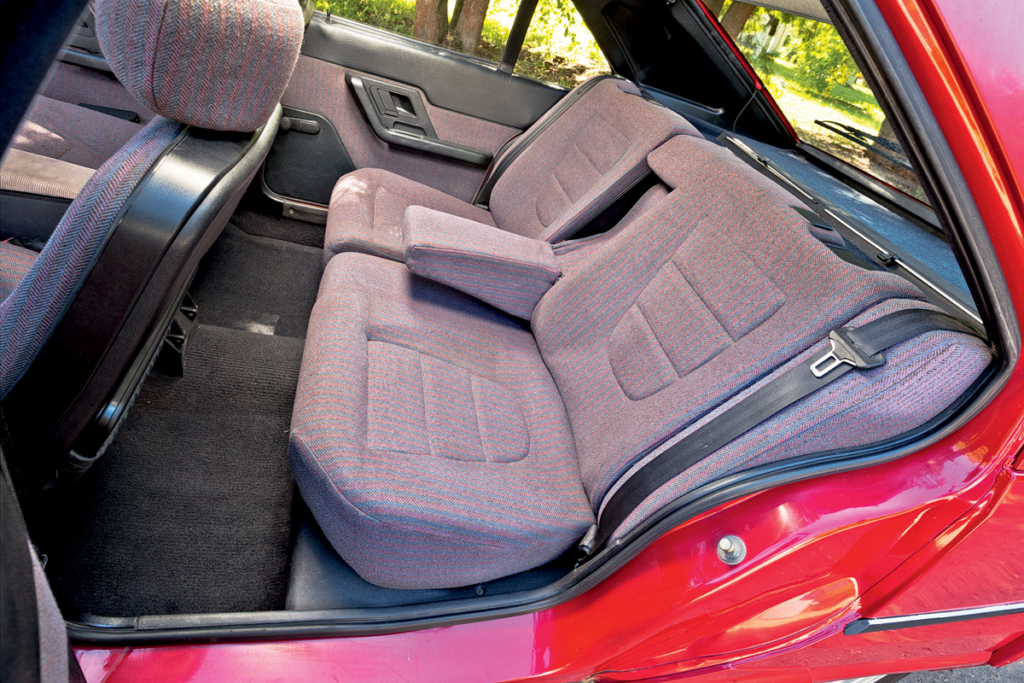
There is a rear armrest and separate backrest, but there is less space than in Peugeot.
Once again, the answer is no. It turns out that a glitch in the hydraulic system emerged—the central hydropneumatic accumulator, responsible for cushioning the most intense bumps, succumbed. Frustrating, yet an integral facet of life with a Citroën.
And yet, it feels worthwhile. Yaroslav Tsyplenkov and I decided to subject these retro cars to a contemporary expert evaluation protocol once more. The results remained modest, but Citroën emerged victorious, thanks to its trunk space and the interior’s transformative features (Peugeot scored a resolute zero in this department). I believe a similar outcome would unfold if we tallied points for cultural value.
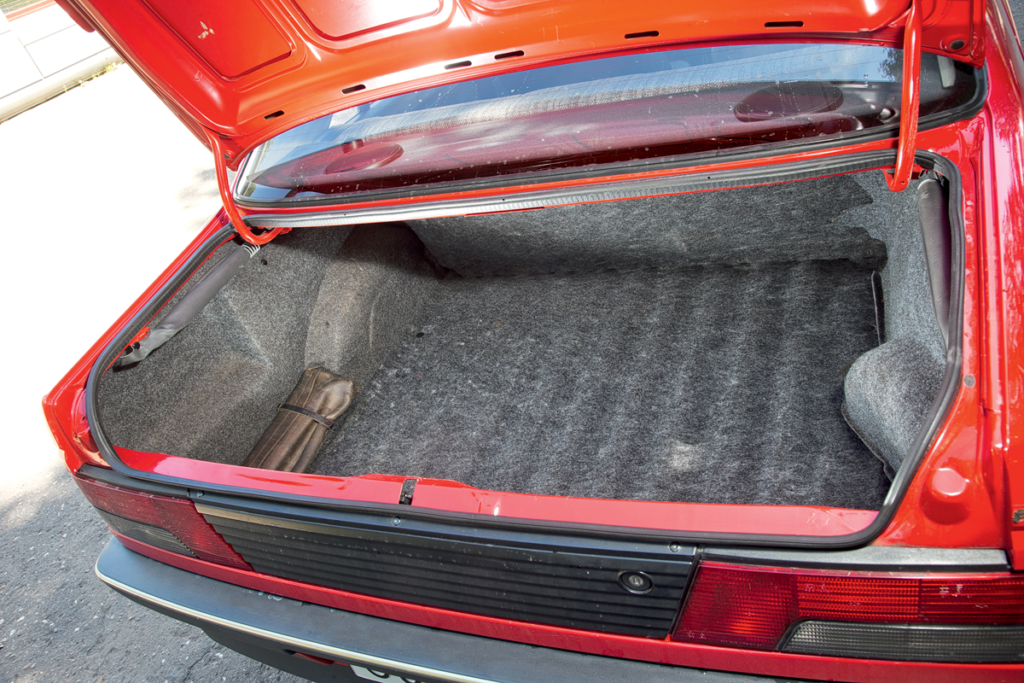
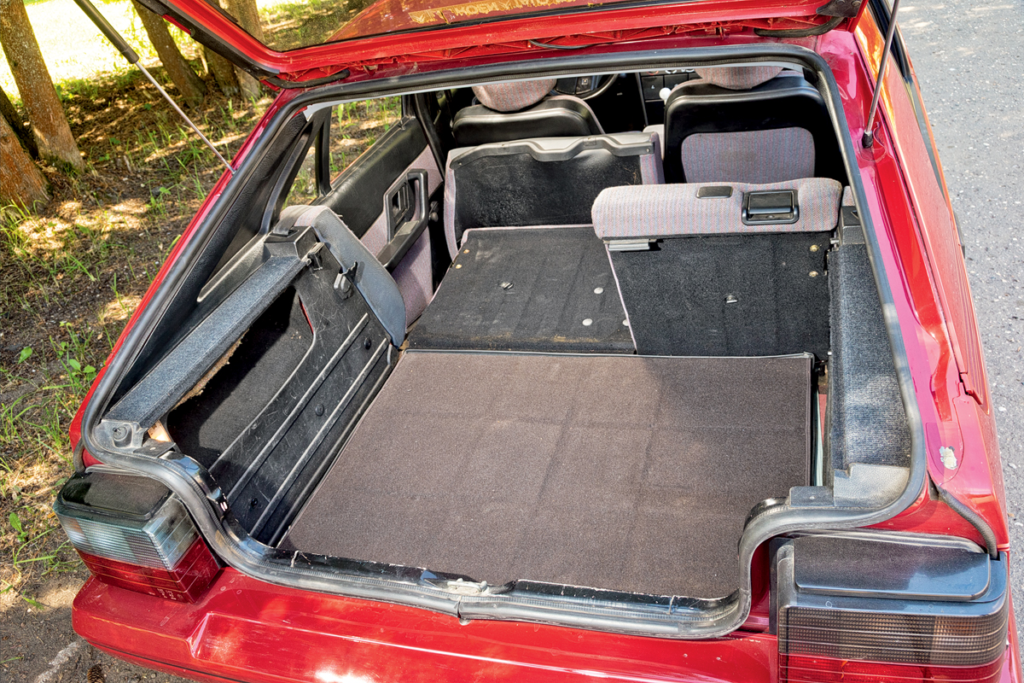
The Peugeot trunk (first slide) has 470 liters of cargo space – with a high board, and there are only a few “useful little things” here, such as the filling neck bump on the right wall. Citroen is more modest in numbers – 444 liters, but the compartment is flat and with shelves on the sides. The sofa folds separately and level with the floor but in two steps. In the two-seater configuration, the useful volume increases to 1455 liters.
The French cars of the late ’80s and early ’90s have all but vanished from our roads. Those that endure haven’t transformed into coveted collector’s items. Estranged from notions of prestige and aggression, these vehicles failed to cultivate a cult following, remaining misunderstood and unappreciated. Yet, Citroën stands out for its design and technical ingenuity, unmistakably resembling an aging alien spacecraft—a true UFO that might not soar as it once did but maintains its authentic allure.
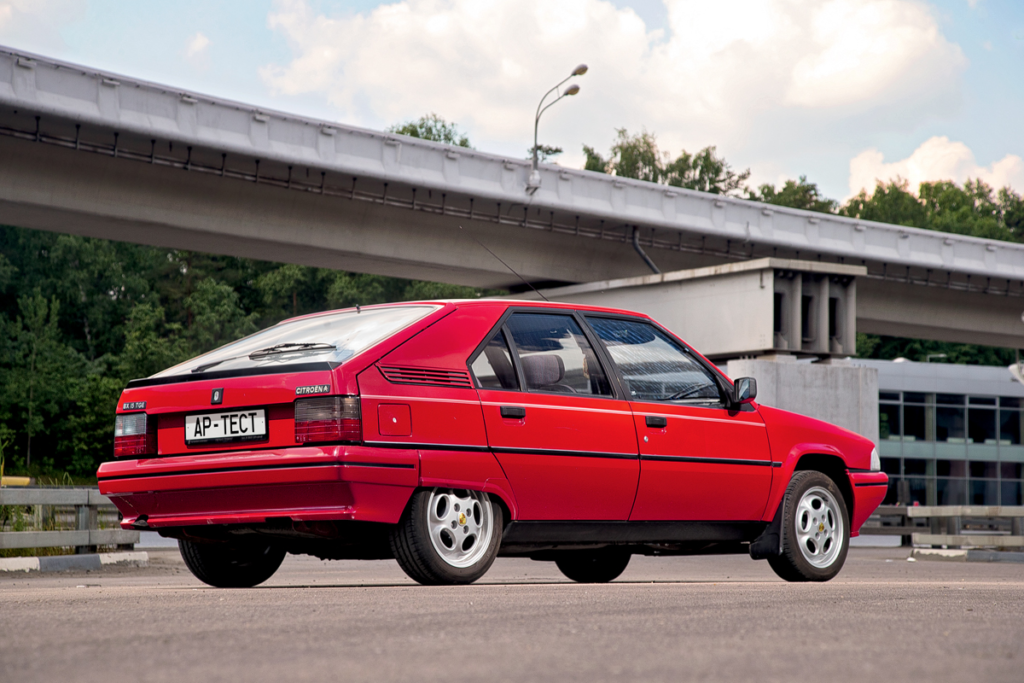
Peugeot 405, on the other hand, unfolds as a more intricate narrative. Even in pristine condition, this car, amidst the modern automotive panorama, resembles a violin or flute alongside electric guitars and synthesizers. A delicate and fragile instrument capable of very little, yet what it accomplishes, it does so with a poignant and distinctive resonance. Not everyone may comprehend or value it, but those who do will carry the memory.
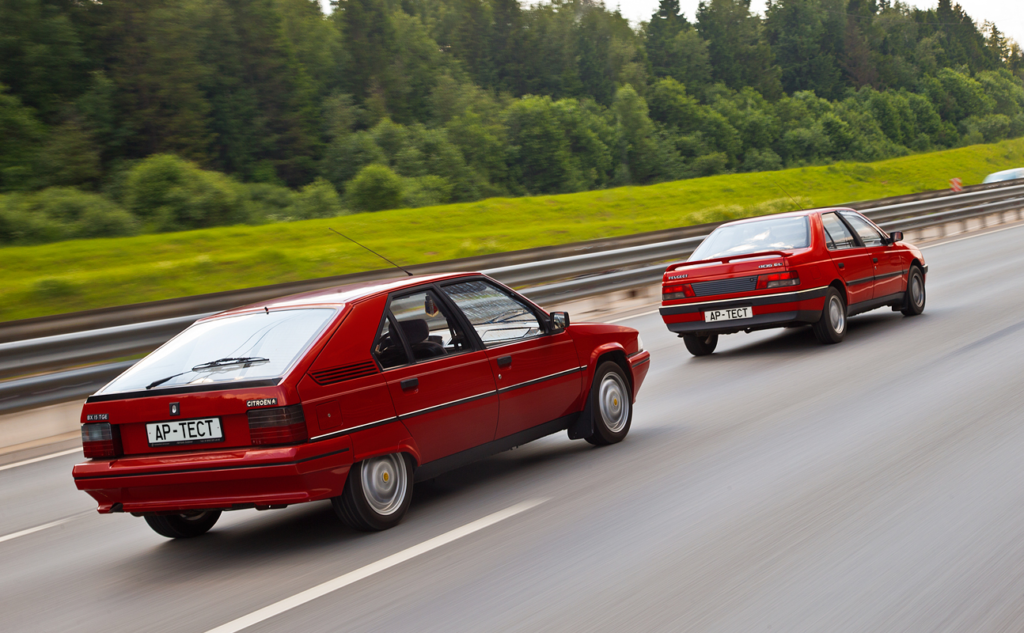
Let these two cars together be etched in our minds—an illustration of healthy platform unification in the automotive realm. A testament to the fact that masterpieces can emerge even in mass-market domains, where cost-cutting, when accompanied by talent and passion for cars, effortlessly transforms into genuine magic.
Photo: Dmitry Pitersky
This is a translation. You can read an original article here: Економагія: Citroen BX проти Peugeot 405 (+ спогади Подорожанського та Мохова)

Опубліковано Лютий 29, 2024 • 12хв на читання

